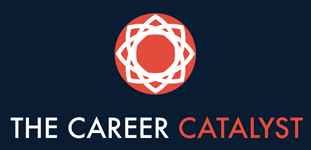
Are you stuck in a career you don’t enjoy? Here are some steps to get you started in a change of direction. If you get stuck on any of the steps, please feel free to reach out, or just have a conversation with a friend or trusted family member.
- Identify what’s making you unhappy. That may sound pointless—you know you’re unhappy, after all—but getting specific can help you understand what needs to change.
- Brainstorm what you enjoy doing. These can be skills you have, hobbies you enjoy, or ideas you let slip away when adulting got too time-consuming. Everything is fair game, so write it all down! Yes, even the unrealistic stuff. The point of brainstorming is letting it all come out and capturing it in one place. Once you’re done (and be sure to give yourself plenty of time), walk away. You need some space after a brainstorming session, so go do something else. If possible, set aside your notes for at least 24 hours, but even if you just go for a long walk or spending an hour with a good book, the time away from your ideas will let them percolate nicely.
- Look over your ideas and circle (or otherwise note) the ideas that really jump out to you.
- Next, start a list of any transferrable skills you have from previous work, volunteering, or school. Don’t down-play things you did for free! Organizing a team to do a charity walk comes with proof of your organizational abilities, for instance, as well as good communication. Be creative. How did your time waiting tables give you skills you can use elsewhere? (Hints: being friendly under pressure, remembering details, fostering excellent customer service, etc.)
- Now compare your two lists. What’s circled on your interests sheet? How do those things dovetail with any skills you have listed? When things overlap or mesh nicely, what career titles does that suggest to you? Don’t worry if nothing comes to mind, but make a note of anything that does.
- Take your ideas and thoughts and head on over to the O*Net You can enter any possible job titles you’ve come up with, or search for a keyword and see what comes up. Be sure to check the educational requirements of anything that sounds interesting to you, so that you don’t wind up being disappointed later, when you see that you need an additional piece of education or something.
- Finally, when you have your list of possibilities narrowed down to a manageable number (I recommend 1-5 ideas), start looking for people with those titles. LinkedIn is an easy way to do that. Reach out to them with a simple email or phone call: “Hi, you don’t know me, but I found you on LinkedIn and I’m interested in learning more about your career field. I’m in a career transition, and I am wondering if what you do might be a good next step for me.” Make it clear that you’re only seeking information, so people know you don’t expect them to do a job-search for you.
- Identify any barriers (more education? Licensure? Software you need to know?) and whether you can overcome those—and how to overcome them, of course. If you can’t, what are related occupations? How do people get started on this trajectory?
- Finally, apply! You will need to re-work your resume and LinkedIn profile to reflect your next steps, but more on that later this week. ????



